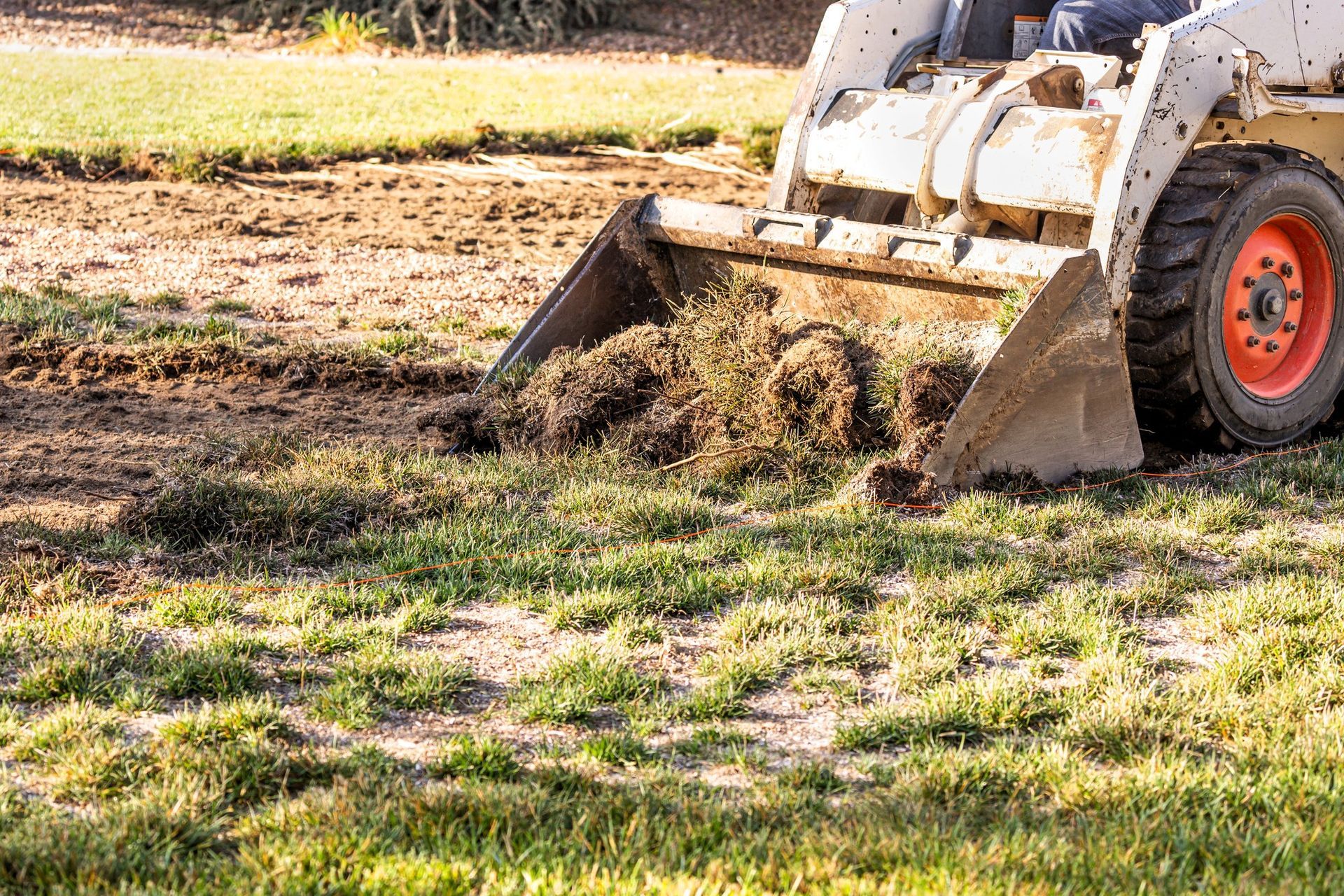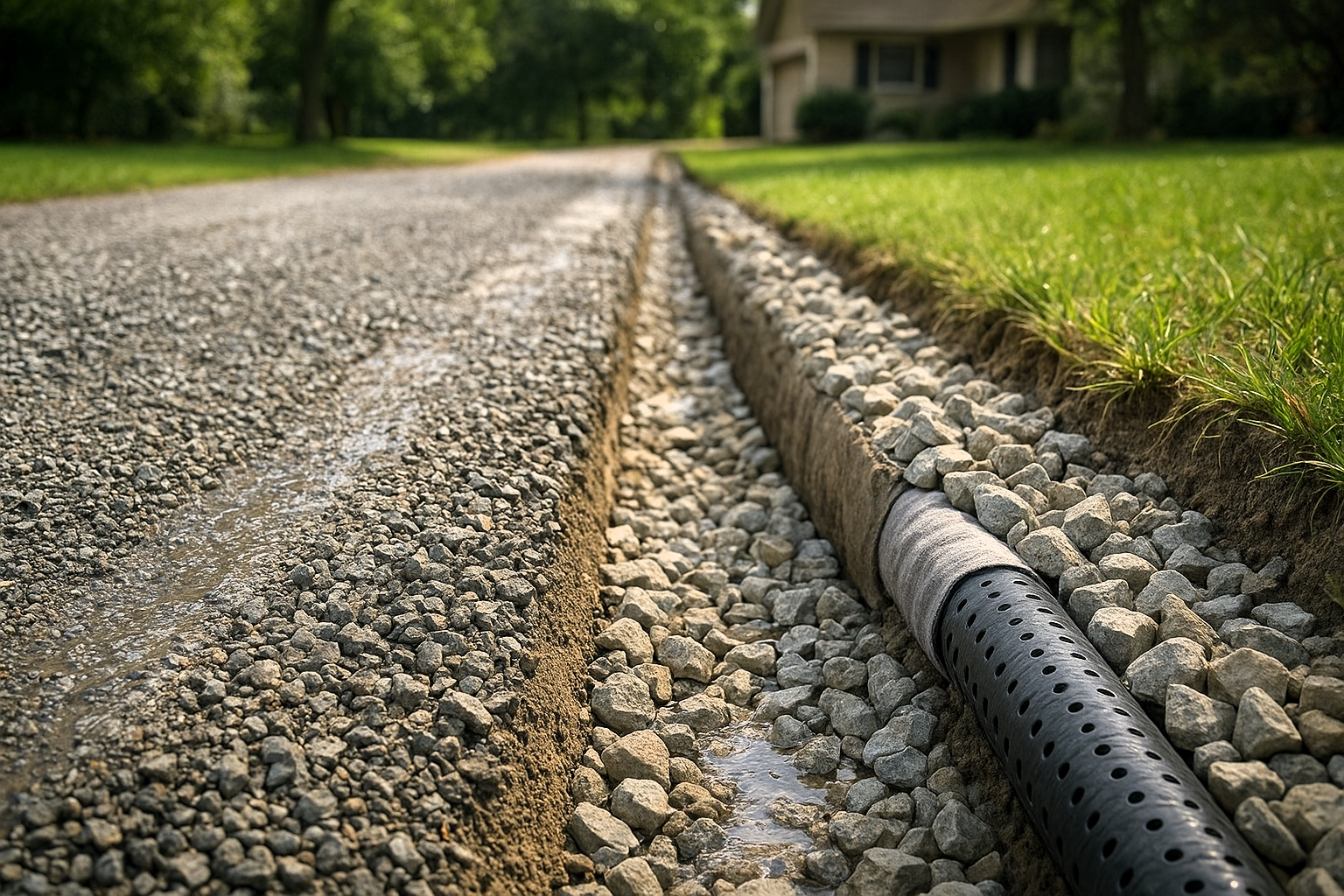9 Common Land Grading Mistakes (and How Homeowners Can Avoid Them)
Avoid these common mistakes that could damage your property

From constructing a new home to laying down a gravel driveway or gearing up for landscaping, proper land grading is essential to ensure your property’s lasting stability and health. Unfortunately, it's also one of the most overlooked steps—until problems like water pooling, erosion, or foundation damage start to show.
We've experienced the significant consequences that arise when grading mistakes occur. That’s why we put together this guide to the most common land grading mistakes homeowners make—and exactly how to avoid them. If you're planning a project or noticing drainage issues, this could save you thousands in future repairs.
1. Skipping Site Planning and Evaluation
The mistake: Many homeowners jump straight into excavation or landscaping without assessing the site’s slope, soil type, and drainage patterns.
How to prevent it: Conduct a thorough site assessment before starting any grading work. This includes checking for existing drainage paths, obstacles like trees or underground utilities, and understanding how water currently flows across your land. A proper grading plan starts with a proper site assessment.
2. Misjudging the Slope
The problem: A surface that's too level causes water to pool, while one that's too steep invites erosion. Getting the slope wrong is one of the biggest pitfalls.
How to avoid it: The ideal slope is about 2% away from any structure—that’s roughly ¼ inch drop per foot. Precision can be achieved by utilizing instruments such as a laser level or string line. This gentle slope ensures water drains away from your home without causing erosion.
3. Ignoring Drainage Design
The mistake: Failing to include proper drainage solutions often leads to water pooling near foundations or flooding in low-lying areas.
How to avoid it: Plan for water. Swales, French drains, and culverts should be part of your grading strategy. Direct runoff away from your home and into designated drainage areas to prevent long-term damage.
4. Inadequate Soil Compaction
The mistake: Loose or overly compacted soil settles unevenly, leading to bumps, depressions, and ineffective drainage.
How to avoid it: Grading in layers and compacting each one properly helps prevent future shifting. Use the right compaction tools and avoid grading when the soil is too wet or too dry.
5. Using the Wrong Equipment
The mistake: Trying to grade with just a shovel, or using oversized machinery for a tight yard, leads to poor results and potential property damage.
How to avoid it: Match the equipment to the job. A skid steer, mini excavator, or even a laser-guided box blade may be required depending on the size and slope of your land. When in doubt, bringing in a professional is usually the smarter—and more cost-effective—choice over time.
6. Overlooking Proper Erosion Prevention Techniques
The mistake: Leaving graded soil exposed to wind or rain can lead to major erosion before the project is even finished.
How to avoid it: Stabilize the soil using erosion control blankets, straw, mulch, or even quick-growing ground covers. If your slope is steep, consider terracing or retaining walls.
7. Not Thinking Ahead to Landscaping or Driveways
The mistake: Grading a yard without considering future additions like patios, driveways, or garden beds can cause setbacks or rework later.
How to avoid it: Work with a professional to ensure your grading plan includes space and proper elevations for all future landscaping and hardscaping.
8. Skipping Permits and Local Code Compliance
The mistake: Some homeowners overlook required permits or ignore local grading codes, which can lead to fines, delays, or failed inspections.
Prevention tip: Consult your local building authority before beginning any grading project. A licensed contractor will know what's required and can help you stay compliant.
9. Taking the DIY Route Without Experience
The mistake: Land grading seems simple, but doing it wrong can cause serious long-term issues—from basement flooding to cracked foundations.
How to avoid it: Unless you’re confident in your abilities and tools, this is a job best left to professionals. Experienced grading contractors understand soil behavior, slope, water flow, and equipment operation—ensuring the job is done right the first time.
Conclusion: Get Grading Right from the Start
Land grading isn’t just about leveling dirt—it’s about protecting your property for the long haul. When done correctly, it prevents water damage, reduces erosion, and sets the stage for everything from driveways to landscaping. When done wrong, it can cost you thousands in repairs and headaches.
If you're dealing with drainage problems, planning a new project, or simply want to make sure your yard is graded properly—we're here to help. At Marion Gravel Driveways & Grading, we bring the right equipment, the right knowledge, and the right experience to every job.
Get in touch with us for a consultation—let’s ensure your property starts with a strong and stable foundation.


